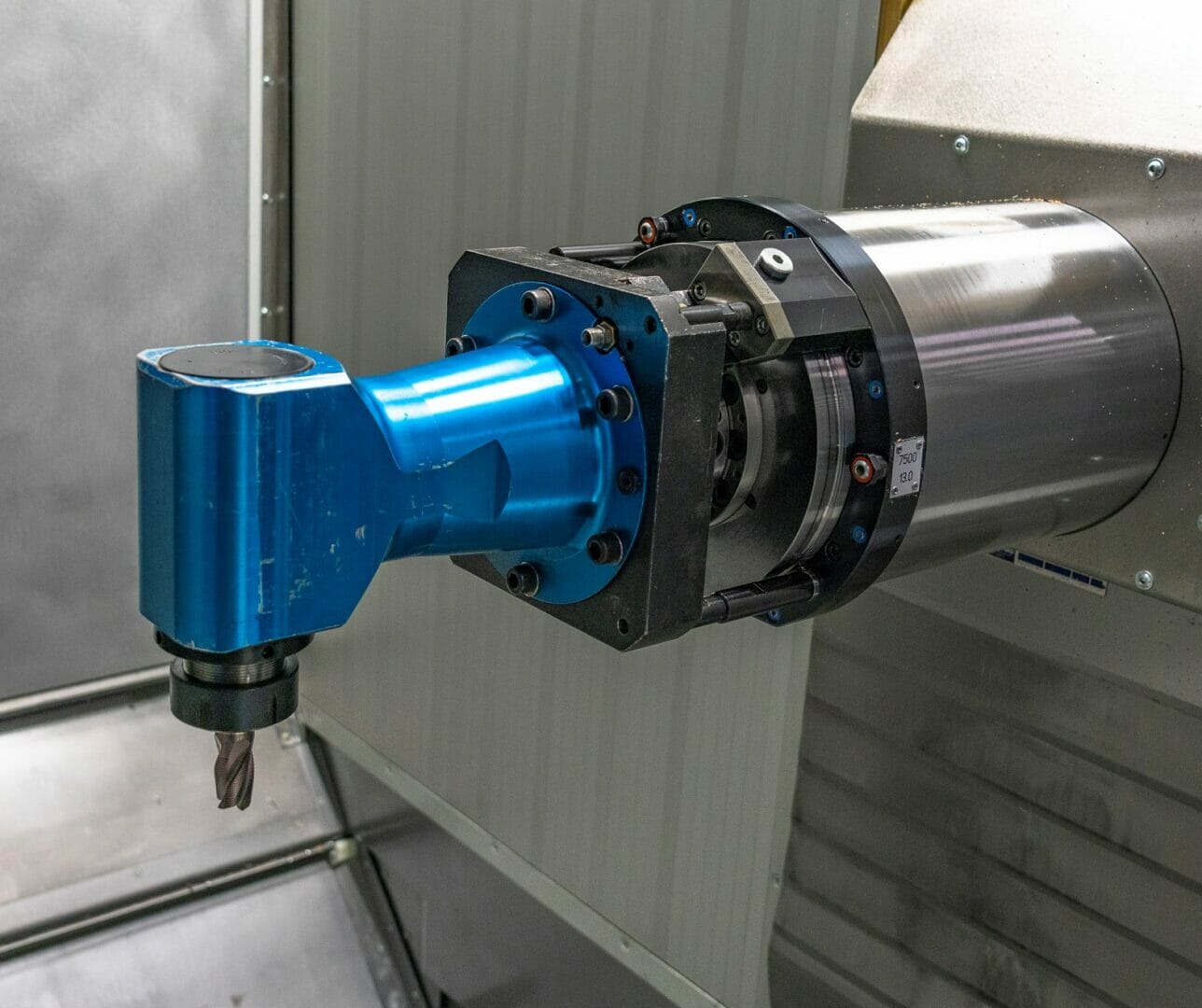The success of a Heckert HEC 800 X5 five-axis machining centre on titanium machining at Hyde Group’s Hollygate Aircraft Components has subsequently led to the installation of a similar Heckert machine at sister Group company Victoria Production Engineering, for processing stainless steel parts.
Both X5s, supplied by Starrag UK, have enabled the companies to ‘work smarter’ by introducing twin-pallet machining instead of single-station, three-axis working. This provides for unprecedented utilisation levels due to the fact the machines’ twin pallets enable efficient extended hours of machining.In addition, not only do the machines’ attributes such as integrated spindle monitoring, high-pressure coolant and excellent swarf removal allow for unmanned working, but the improved toolholding stability has also led to improved tool life.
Both companies are part of the Aero Products division of the Hyde Group – the North West-based leading engineering service provider that specialises in design, manufacture, tooling and support for a global blue-chip customer base that includes such companies as Airbus, BAE Systems, Boeing, Embraer, GKN Aerospace, Leonardo, MBDA and Rolls-Royce.
Paul Mellor, Divisional Technical Director, explains how rising demand for the titanium workpiece at Stockport-based Hollygate spurred the search for “an improved way of working where we could effectively gain more from the same” in terms of replacing machine-for-machine in terms of floorspace and manpower requirements, which led to the installation of the initial Heckert HEC 800 X5.
“Rising order volumes for this long-standing contract meant we had to look at becoming more productive,” he says. “It’s all part of the Group’s quest for continuous improvement, and one of my roles is to work with all ten companies in the Division on investment plans which will meet both current and forecast demands as well as ensure we are installing fit-for-purpose and value-for-money production machinery.
“Our request for process improvements, using a test piece requiring heavy roughing, pocket machining, long-edge profiling, and face and plunge milling – was originally sent to six potential machine suppliers and Starrag was the only one that could meet the brief.”
He continues: “We’ve been cutting titanium for over 30 years so seeing Starrag’s proposals for process improvement – based around the implementation of different feeds and speeds, for example, as well as the use of a trunnion table for four-/five-axis working – were ‘very interesting’, bearing in mind the components in question had been designed for three-axis machining.
“In fact, Starrag liaised closely with our engineers and everyone else involved (such as the tooling and fixturing suppliers) in order to, as Starrag says, ‘Engineer precisely what you value’, and the machine’s advanced spindle monitoring, high-pressure coolant and superb swarf evacuation all lend themselves to excellent levels of productivity.
“We chose the five-axis Heckert HEC 800 X5 with an uprated gear-driven spindle because not only did we want improved access to certain machined features on this existing part (thanks to five-axis working), but we also needed a certain amount of future-proofing in terms of spindle power for potential new work and to take advantage of any improvements in tooling technology.”
With axis travels of 1,450 mm by 1,100 mm by 1,300 mm, the Heckert HEC 800 X5 not only easily accommodates the existing titanium workpiece but there’s also capacity for additional, larger five-axis work utilising its 80-position tool magazine and 800 mm by 1,000 mm pallets which can accommodate 1,200 kg loads.
Mr Mellor, who has been with the Group for 24 years starting as a machine programmer/operator in 1995 and appointed Divisional Technical Director in 2007, outlines how similar process improvement strategies were employed for the stainless steel workpieces being machined by Victoria Production Engineering in Manchester.
“Two aspects were of particular significance,” he says. “These were Starrag’s introduction of the use of special hydraulic ‘sleeve’ clamping (via the machine’s hydraulics system) to consistently hold – yet not deform – the thin-wall tubular parts, and the application of long-reach angle milling heads on the Heckert HEC 800 X5.
“The Heckert machine is used solely for internal milling on these pre-turned workpieces. The angle milling heads, of either 280 mm or 375 mm long, reach into the workpieces and perform all milling tasks. The heads are held and automatically changed via the machine’s toolchanger.”
Mr Mellor concludes: “We want best-in-class in everything we do as a Group; we’re always looking to improve – hence our six-year Sharing In Growth programme that has focused on reduced lead times, on-time delivery and right first time production, and which has impacted all departments. This is now being followed by the Group-wide quest for the SC21 performance standard initiative, which embraces the importance of high standard quality and delivery measures.
“It’s all about producing components right first time, every time, and the Starrag machines and processes are fine examples of how we do that.”









